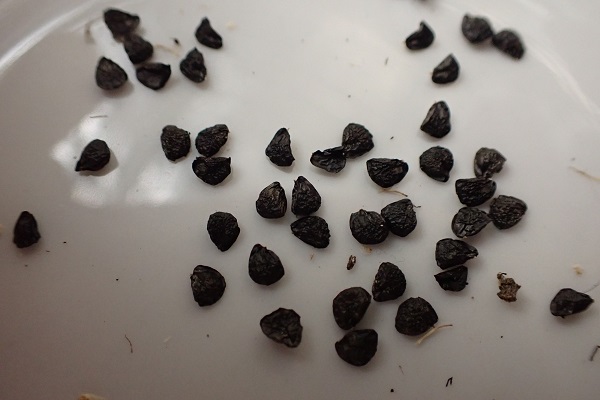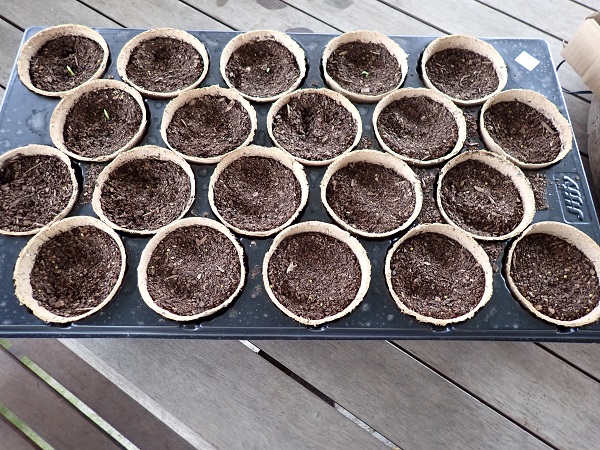
I have been saving seeds from my garden for years. To me, it is just a natural extension of my gardening. This year, it has been more than just a present hobby; it has been a necessity. Last month, the store shelves were stripped bare of seeds as Australia went into lockdown due to the coronavirus pandemic. Even mail-order seed companies were unable to fill orders promptly. Seedlings to plant in your garden were also not available as demand outstripped supply, with gardening and growing veggies in the backyard suddenly becoming very popular.
For me, this was a minor inconvenience, as I had plenty of seeds on hand to get started. Some I planted straight out into the garden. Others, I have started in biodegradable pots, of whatever I could get my hands on, undercover. It is easy enough to do, but there are a few things you have to know. There are four kinds of seeds you could collect, and not all will be suitable. They are open-pollinated, heirloom, hybrid, and GMO.
Open-pollinated seeds are pollinated naturally by bees and other insects, the wind, and sometimes even birds. In your garden, you cannot control where bees and other insects go, so as long as the pollen is not shared between different varieties, the seeds will remain true to the parent plants. If you plant all your Tom Thumb tomatoes together, they will pollinate each other, and the seeds will still give you Tom Thumb tomatoes next year.

Heirloom seeds are from varieties that have been around for a long time. You can usually date them back about 50 years, some much, much longer. They are all open-pollinated, but great care is taken to ensure that there is no cross-population. My favourite place to get heirloom seeds is Diggers. They are seed varieties that have been passed down from generation to generation, father to son, mother to daughter, in a tradition dating back as long as farming has been around.
Hybrid seeds are intentionally cross-pollinated, mixing one species or variety with another by human intervention. These seeds can be great, and you can purchase the first-generation seeds and plant them. However, the seed from what you grow will be genetically unstable, and you will be unable to use them the following year. These hybrid seeds are sometimes referred to as F1 seeds. If you grow hybrid plants, you need to buy new seeds every year.
GMO seeds are genetically modified seeds. This is done by identifying a positive trait, such as drought resistance, and then transferring that gene into the plant seed. GMO seeds do not reproduce well, so you have to buy new seeds every year. There is also the problem of possibly infringing upon the intellectual property rights of the creator of the GMO seeds, and there have been a few legal battles in this regard. I have so much to say about that subject that I think I had better leave it alone… for now.
I intentionally save open-pollinated and heirloom seeds, with a few accidental hybrids getting this there as well, and avoid all GMOs.



You’ll find you always end up with more seeds than you could use. I start more seedlings than I have room to plant in my garden, but not really a problem, as I just give some away.
I love seeing the new plants push up through the seed-raising mix I use and then turn into the seedlings I will be planting out in a few weeks. Growing things is amazing, and for many years, I always went to a nursery and bought plants. But once I got into seed saving and started growing my own seedlings, I was hooked. Not to mention that it saves you a small fortune.
So get out there into your garden, save some seeds, and share them with your friends and family. It’s a seven-thousand-year-old tradition, started by the first farmers. Let’s keep it going.
As always, live well.
Valerie
Hi Valerie, with regards to seeds you store for future planting, what do you do to prepare the seeds for storage? Any advice for starting out would be wonderful.
Hi Nicki:
Thank you for joining me.
I collect the seeds and place them on a plate on a paper towel and dry them, if necessary. This is for seeds such as pumpkin, melons and tomatoes. Other seeds collected are dry already like onion seeds and beans and peas that have dried on the plant. Once they are clean and totally dry, I store them in jars labelled with the seed name and date harvested. I keep the jars in my pantry where it is cool and dark.
Valerie